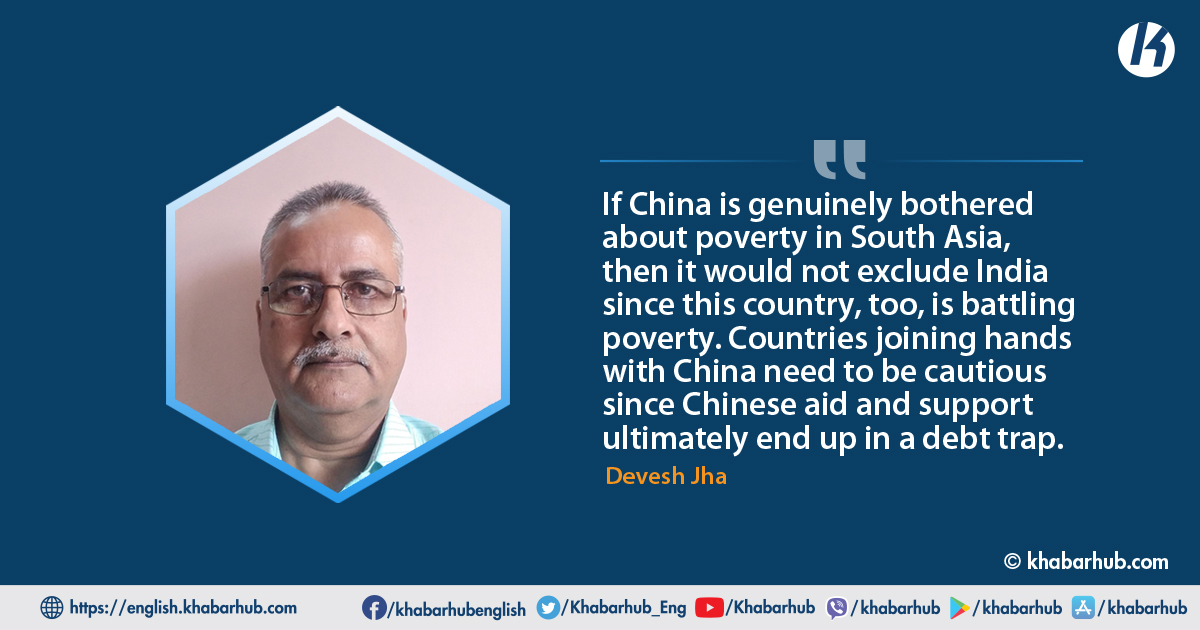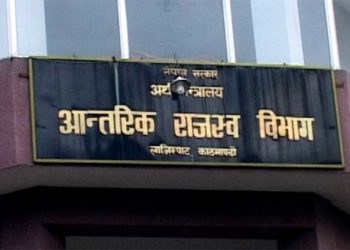South Asia — known as the Indian Subcontinent or Southern Asia — includes Sri Lanka, Pakistan, India, Nepal, Maldives, Bhutan, Bangladesh and Afghanistan — all members of the South Asian Association for Regional Cooperation (SAARC).
With a diverse economy, most of the SAARC members are poor with Afghanistan, Nepal and Pakistan having a low per capita income.
The GDP of Afghanistan remains low despite the influx of foreign aid and remittances from the Afghan diaspora over the last decade.
This low GDP per capita, which increases the cost of doing business and reduces competitiveness is due to insecurity, poor infrastructure, bad economic practices, political uncertainty, corruption, poverty, and a landlocked country.
Despite being poor, the possibility of a civil war cannot be ruled out as the Taliban may make a comeback to capture the state power after the American forces leave the country. Such a situation could further push the country’s GDP downwards.
Nepal is the second poorest nation in South Asia despite big a neighbor of big economies such as India and China. Located within the Himalayas, the country’s mostly mountainous geography complicates infrastructure and economic development.
Recently, China has formed a platform in the name of poverty alleviation for South Asian countries like Bangladesh, Sri Lanka, Pakistan, Nepal and Afghanistan.
Nepal was isolated for quite a long time and was not developed until the 1950s. This land-linked country also witnessed a decade-long insurgency that severely affected the country’s GDP. An overreliance on agriculture and rampant corruption also stagnated the country’s growth as well.
Despite having the 25th largest economy globally in terms of purchasing power parity (PPP), Pakistan’s GDP per capita is low due to a variety of reasons.
This country’s involvement in several years of war, insecurity from militants, internal political disputes, high population growth rate, post 9/11 military operations in Afghanistan, recurring droughts, and economic sanctions are the main causes behind its lower GDP.
The per capita income of South Asian countries include Afghanistan 508.8, Nepal 1,155.1 Pakistan 1,193.7, Bangladesh 1,968.8, India 1,900.7, Bhutan 3,122.4, Sri Lanka 3,682.0 and Maldives 7,455.9 U. S. Dollars as of the year 2020.
It could be assessed easily that SAARC has a poorer country like Afghanistan with a few hundred dollars per capita income whereas a comparatively well-earning country like the Maldives has more than US$ 7455.9.
China’s long-awaited strategy is to make an approach in South Asian countries and for that, it tried to go through SAARC.
In the thirteenth SAARC Summit 2009 held in Dhaka, China and Japan got the status of observers whereas Afghanistan was welcomed as a member.
In the 14th SAARC Summit held in Kathmandu in 2014, China expressed its interest to be an official member, which, however, is yet to be decided.
Currently, SAARC is not very functional and has been facing challenges as India wants a complete full stop to the backup of terrorism from Pakistan. However Pakistani has been denying the allegations throughout.
Taking advantage of this situation, China floated a fresh platform for South Asian countries including itself as a member/convenor called China-South Asia Cooperation Forum (CSACF).
On March 26th, 2021, the Chinese Ambassador to India Sun Weidong published an article entitled “Poverty Alleviation: Common Cause, Great Achievements” on The Policy Chronicle. Praising President Xi Jinping’s target, efforts and achievements for Chinese rural residents in shaking off poverty since the beginning of reform and opening up over 40 years ago.
The first summit was held in June 14 and 15, 2018 at Fuxian Lake in the Yunnan Province of China with the theme: “Closer Regional Cooperation for Inclusive Development” which attracted 400 participants from all SAARC countries except Bhutan.
The 2nd China-South Asia Cooperation Forum (CSACF), held recently in Yuxi city in Southwest China’s Yunnan province including more than 500 participants from China and South Asian countries.
The two-day forum with the theme “Stronger Sub-National Partnership for Win-Win Opportunities” has deepened the relationship between China and South Asian nations with enhanced bonding among South Asian countries.
The CSACF has provided a vibrant platform for facilitating policy dialogues, trade, investment, and people-to-people exchanges between participants.
Recently, China has formed a platform in the name of poverty alleviation for South Asian countries like Bangladesh, Sri Lanka, Pakistan, Nepal and Afghanistan.
In the presence of the concerned country’s ambassadors in Chongqing City of Sichuan province “China-South Asian countries poverty alleviation and Cooperative development center” was launched with a formal ceremony organized by the foreign ministry of China.
The idea for the establishment of the Center was proposed by the State Councillor and Foreign Minister Wang Yi in a virtual conference attended by participating country’s Foreign Ministers earlier at the end of April.
Describing it in a statement, “The Centre aims to pool strength, integrate resources, and exchange wisdom to support and help the South Asian countries economic development and livelihood improvement, jointly promoting the cause of poverty reduction” said the Foreign Ministry of China.
However, they have not announced how the Center will function, and its budget, and how it works with the South Asian countries except for some inter-ministerial consultations on utilizing the forum.
As per the agreement between China and five South Asian nations, apart from this Center, China is going to set up China-South Asian Countries Emergency Supplies Reserve in Chengdu mostly targeting natural disasters and prompt supply of emergency goods.
On March 26th, 2021, the Chinese Ambassador to India Sun Weidong published an article entitled “Poverty Alleviation: Common Cause, Great Achievements” on The Policy Chronicle. Praising President Xi Jinping’s target, efforts and achievements for Chinese rural residents in shaking off poverty since the beginning of reform and opening up over 40 years ago.
The three emerging economic heavyweights in this region are India, Pakistan, and Bangladesh. These three, along with the other countries in South Asia, have unique development challenges but are addressing them through good fiscal and monetary policies and service delivery.
He wrote, “In the past 8 years, more than 10 million people have been lifted out of poverty on average each year.”
In his article, Ambassador Weidong describes: “China and India are the only two countries with a population of more than one billion, both of us are ancient civilizations, large agricultural countries, and members of the United Nations Alliance for Poverty Eradication. It is our common long-cherished wish to shake off poverty at an early date. China-India cooperation in poverty reduction has huge potential and broad prospects, and is in the fundamental interests of the two countries and their peoples”.
But contradictory to his article while accommodating five among the eight countries of SAARC, China seems to exclude India, even though Bhutan and Maldives are also out of the table.
As Bhutan has no official diplomatic ties with China, it is taken in that manner but the Maldives would be taken into account sooner or later.
On one hand, China accepts joint efforts with India in poverty reduction and calls it their common long-cherished wish but on the other hand, tries to exclude its southern neighborhood to form a parallel organization to SAARC.
With Myanmar and Vietnam have already signed in on to the CSACF, China can still claim that it was not a challenge or replacement for the SAARC.
But in reality, the story says something else. China has been deeply concerned over the Quadrilateral Security Dialogue (Quad), an informal strategic alliance involving the United States, India, Japan, and Australia. Beijing’s strong reservations were reflected in the recent statements of the Chinese ambassador to Bangladesh, Li Jimming.
While interacting with diplomatic journalists, he warned Dhaka against joining this group with a warning to “substantially damage” bilateral relations between Bangladesh and China.
Calling the Quad “a military alliance aimed against China’s resurgence” in South Asia. However, later clarified saying it was his personal views and not making any suggestion to the government.
South Asia is the world’s fastest-growing region, and is even faster than China. This is explained by strong expansion in countries like India, improving business competition, improved public institutions, improved public health, improved international trade, quality primary education, infrastructure development, increasing foreign investment, transparent financial systems, and economic diversification.
If the Chinese are really bothered about poverty in South Asia, they should not exclude India because this country, too, has a major poverty population. Sooner or later this move will bring fresh disputes in the Himalayas which is not healthy for SAARC countries.
The three emerging economic heavyweights in this region are India, Pakistan, and Bangladesh. These three, along with the other countries in South Asia, have unique development challenges but are addressing them through good fiscal and monetary policies and service delivery.
China is the second-biggest global power rapidly expanding its economical bases. It seems that they want to enter the South Asian region in a bid to extend its market as well as to build pressure on India forming an alliance against Western forces especially the USA.
For that, they tried with harsh border confrontation, the building of a huge dam on the Brahmaputra so they can control waters but not yield many gains.
Now China is worried about Quad and to find the balance they are trying strategically towards South Asian countries neighboring India to ensure a big threat if it keeps moving with Americans.
If the Chinese are really bothered about poverty in South Asia, they should not exclude India because this country, too, has a major poverty population. Sooner or later this move will bring fresh disputes in the Himalayas which is not healthy for SAARC countries.
It would be better for those who are joining hands with China to make a step forward very cautiously because they propose support with welfare but ends in a debt trap.









Comment